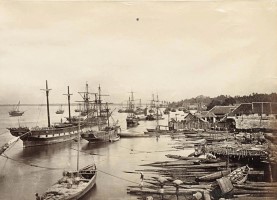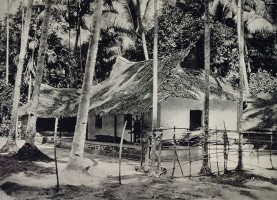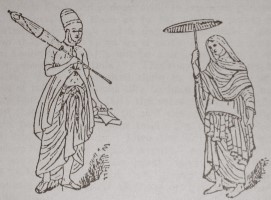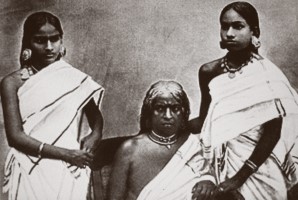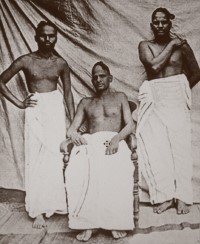Letters of Canter Visscher - Foundation to Kerala History
About the Weather
Kochi and its Forts.
Kozhikode - Port in Malabar, Royal family and the Administration.
Caste System in Kerala.
Malayalam Era and festivals.
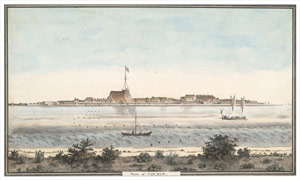
Neuhaff spent only five years in Kerala that was from 1661-66. Half a century later, a Dutch Priest Canter Visscher settled in Kochi, wrote a series of 25 letters on Kerala, its society, life and culture, on seasons, on local principalities, political set up, on coins and currency, temples, agriculture, flora and fauna, calendars and almanac. He formed the first hand recorded information on Kerala. The last letter was in 1723. Renowned historian K P Padmanabha Menon authored four volumes of History of Kerala based on these letters. This book served as a beacon light for successive historians. Bauke Der Pol's "Mallabaarse Brieven (മലബാർസ് ബ്രിയവൻ)" and K Siva Sankaran Nair's "Keralam oru lanthakarante drushityil (കേരളം ഒരു ലന്തക്കാരന്റെ ദൃഷിടിയിൽ)" are recent books on Kerala based on Visscher's works.
Weather
According to Visscher, filarial was considered a dreadful disease. Visscher had explained how the Dutch fetched pure water from Mangad (Aluva River). He also explained that there was no marked change in seasons in Kerala like Europe. He had given an account on the advancing and retreating Monsoons accompanied by thunder storms and cyclone.
Kochi and its Forts.
On Kochi Visscher had at length described on Kochi and its forts. The Dutch annexed the Kochi fort from the Portuguese. In 1662, Richlof Van Rheed was appointed as the Admiral to annex this Fort. Initial efforts had failed. Pier Du Pont, the Captain, succeeded to barge in. On 8thJanuary 1663, Ignatio Sarmento, the Portuguese captain surrendered. Soldiers and civilians vacated the fort.
The Kochi Fort was built by Francisco d' Almeida and Alfonso de Albuquerque. The Portuguese reached here in 1504, when Emmanuel was ruling Portugal. Later Vasco da Gama extended the Fort. Kochi became an advanced trading center hence rich. Kochi was made the capital of Roman Church. Later more churches were erected. The Dutch either demolished these churches or made them their arsenal. However, St Francisco Church was retained. It was made into a Reformed Church. In Europe the Catholics and Protestants were fighting with each other. The reference about the Catholic in the Visscher's letter, "Catholic Chruch was demolished", indicates the enmity of the Dutch towards the Catholics. In Europe, Spain and Portuguese supported the Catholics and Germany and Holland supported the Protestants. It reflected in Kochi too. Visscher had also recorded that Kochi was a busy port and many ships and vessels anchored at Kochi for maintenance and to replenish fresh water.
According to Visscher, Kozhikode is the largest port in Malabar. Zamorin had to be paid 5% import tax. Officials were appointed to collect the tax.
Kozhikode - Port in Malabar, Royal family and the Administration.
Royal family in Malabar: From 1679 to 1728, many local rulers approved the supremacy of the Dutch. The reign of Dutch with Kochi as capital continued for long. In 1728, Anizham Tirunal Marthanda Varma assumed power in Venad. The Visscher's letters were dated a few years before Anizham Tirunal. So he could witness the eventful social and political changes. According to Visscher, Malabar had four major families. They were Venad, Kochi, Zamorins and Kolathiris. They followed the matrilineal system by which, the nephews became the heirs to the throne.
The eldest female member was referred as Amma Maharani or the Queen Mother.
Travancore:-stretched from Kanyakumari to Purakkad. Attingal, Desinganad, Signat, Perakathavazhi (Peritalli), Elayidathu swaroopam (Ellida Suruvam), Martha (maruthur kulangara), Kayamkulam (Kully kollam), Trukkunnappuzha (Turkenpolie), Panappuzha (Panapolie).
Attingal was the maternal ancestral house of the rulers of Venad. Places between Tengapattinam and Paravur were part of Travancore. There existed no powerful Queen as the Amma Maharani.
Desinganadu was an offshoot of the siblings of the Venad rulers. It had three divisions-Desiganadu ruled by the Maharaja , the second portion by Vadayattuvila and the third one by Thiruvithamkore kurup.
The third daughter of the Attingal royal family established the Peraka thavazhi (Nedumangad). It extended from Kollam to the Western Ghats. Ilayidathu swarupm was under the control of the descendants of the youngest Princess of Attingal. It stretched from Purakkad to Kayamkulam. Trukkunnapuzha and Panipalli later became part of Kayamkulam. This was the northern frontier of Travancore. Between Travancore and Kochi, there was a small kingdom called Thekkumkur.
Kochi became the second important place under the Dutch East India Company and the Kochi ruler had in his crown the logo of the DEIC. Kochi royal family had five branches and only three existed during the time of Visscher-- Palliruthi (Paliat), Mootha Thavazhi (Montata Viesse) and Chazhiyur (Shalour). They fought each other.
Kozhikkode: The rulers of Kozhikkode: the Zamorins were very powerful as they had a strong army and hence many were afraid of them. Unnithirimar who ruled the region between Kodunagllor and Chettuva were kiths of Zamorins. The Fort of Zamorin was located at Pappinimattom. The DEIC annexed the fort in 1716. The Company erected a fort on the banks Chettuva to resist the attack from the Zamorins.
Kolathiri: (Ruler of Kolathunadu):- According to Visscher, Kolathunadu which stretched between Zamorin's kingdom to Canara in the north is known for cardamom. The land of Vazhunnor (Blaemoor), that is Kadathunadu, had Kottakkal in the north and Dharmapattanam in the south. Dharmappatanam, Kannur, Valapattanam, and Madayi, were the coastal towns.
Administration in Malabar: Visscher had given a general account on the administration of Malabar, reflecting on the life and society of Malabar. Portuguese followed by the Dutch ruled Kochi. But soon the entire Kerala came under the control of the English East India Company. Visscher's accounts elaborate on the administration of the pre-British English East India company period.
In Malabar, the King had the supreme power. There were no Assembly or Parliament set up. The King consulted with his able ministers. The decisions never violated the social norms. The King convened the meeting of the ministers and similarly the subjects also convened meetings to submit their representations to the rulers. The ruler also participated in these meetings. If the ruler decided to take steps against the norms, the subjects protested. But the ruler at times posted spies called "Pandarapillar" for creating pandemonium by pelting stones. The ruler interfered if the "Pandarapillar" were injured and the ruler declared the meeting unlawful. Sometimes it went to the extent of civil unrest. Middlemen and neighboring principalities interfered if needed. But this was not the case throughout Kerala. The rulers appointed soldiers to protect temples and others' controversial land.
Income of the ruler: The income was mainly from the land. The accounts enlisted by Visscher reveal that the arrival of Portuguese increased the income of the ruler. Landlords remitted tax. Levies were imposed on cargo reached through rivers. Chavuka (Junkanaaras) were established to collect the levy. They were erected in the river on huge stilts. They waived levy for the cargo carried by the Dutch ships.
The ruler was offered a present whenever the mothers give birth to children. The ruler sold those people who were declared outlaw. Without the ruler's permission the subjects were neither allowed to grow even mustaches nor conduct feasts. The leader of fisher folk and other leaders of similar clans liberally paid the ruler to retain their posts. Christians, Jews, and Muslims paid the ruler to celebrate their religious ceremonies and to wear ornaments.
Laws and punishments: The laws were drawn based on the tradition and custom of the Malabar people. The permission of the judge was not required to sell property. The ruler interfered in case of controversies. The land for sale was marked by decorating with bunches of leaves.
Punishment: ‘Agnipareekhsha' or test with fire was prevalent in Malabar. The culprit had to dip his hands in boiling oil. If he came out unhurt he was declared innocent. Similarly the culprit was directed to catch the cobra wrapped in a cloth. At times the alleged was pushed into the river where crocodiles had made their home. The prisons were tiny spaces attached to palaces.
The Pulays were born slaves. The rich land lords and the local leaders had number of Pulayas as slaves. They were paid in cash or in kind. The slaves were prevented from serving another owner without the consent of the former. The master had the right to sell or kill any slave. The first child born to a slave couple was meant for the owner of the father and the second to the master of the mother. If any salve happened to raise his hand, towards his master, he was sentenced to death. Besides slaves, outlaws were employed as slaves by the ruler and chieftains. The modes of punishments were cruel. Beheading, shooting, and skinning were followed in Malabar, says Visscher.
War: Hundreds even thousands participated in the war. The armed enemies fought with each other injuring. The Malabar army consisted mainly of Sudras and the Pulayas should not even go near them. The weapons were of various patterns. Sword and shield were the chief weapons. Bow and arrow too were prevalent. They were ignorant of horse riding. The kings had elephants. The Nair soldiers had neither the knowledge on besieging forts nor to use powerful weapons. Their armoury was limited. If the number of dead crossed twenty, it was consider a great and serious war. Things changed very fast. When Anizham Tirunal Marthanda Varma became the ruler, he reformed his army with European system.
Caste System in Kerala
Chovanmars and others: Visscher had narrated a legendary tale on Chovanmars. Their main occupation was tapping toddy. They make an incision on the tender inflorescence of the coconut palm and collect the oozing sap in a pot. There were two categories namely Chovars and Thiya Chovars. Kolakurups were considered inferior to Chovars. They were professional people experts in making bows and arrows and hence they were also called vil kuruppu (Vil means bows). But Kaniyarakkuruppu were excellent in fencing. Kaniyars (astrologers), kuravars (witchcraft), kakka kuravars (who prophesies), Panan and Pullon were categorized as nomads by Visscher.
Mukkuva (fishermen), Kanakkar (palm climbers), Vettuvar (who worked in the salt pans), Kanipparayan and Assipparayan (who weaves cane mats and baskets) were described by Visscher in detail. According to him there were three categories of aborigines-Ulladar who gathered wild honey and wax. They were nude people and considered bear as their forefathers and hence they shaved their heads when they saw a dead bear. Vedan and Nayadi were the other categories. Nair, Pattar, Kongini, Yogi etc: The Nairs of Malabar were warriors. By tradition, they wore weapons and shields. Their customs and practices were like that of kshathriyas. Madambis were the nobles. Other branches were Nambidi, Nambiar, Samanthra, Pathithan, Veliyathu Nair and Vilakkithala Nair (Barbers).
Warriors who accompanied the rulers were paid daily. Karyakkar, the heads of the towns, desa vazhikal and army leaders were selected from reputed Nair families. Chakyars, Pothuvals, Andar, Chembukotti, Panan, Noolchetti, Vaniya Nair, Edacheri Nair, Valanmar, Asari, Moosari, Thattan and Kollan, were engaged in traditional works.
Besides, there were people who visited Malabar for trade, who formed the floating population. Pattars, Konginis and Yogis came under this group. Pattar had Pandakasalas located in Kollam, Kayamkulam, Kochi, Thrissur, Ponnani, and Calicut. Pandi pattar hailed from Thanjavur. Chozhiya and Mukkani were the two prominent groups. They sold rice and fruits. Women adorned themselves with bangles, studs, nose rings, chains, anklets and flowers. Konginis of Kochi, considered the Europeans untouchables and hence stayed outside the forts.
Temples: - They called temples Pagodas. The faith was that, the Gods reside in temples, accepting the offerings of the believers. Some temples had copper roofing. Visscher had referred about the temple at Kodungallor, its architecture richly carved corridors and pillars. The idols were plated with silver or gold. Non Hindus and untouchables were not permitted in the temples. Animal sacrifices were performed in certain temples.
Different Faiths: All farms, fields and homes had scare-crows installed. These were to ward off evil eyes. A few Christians too followed this faith, says Visscher. Construction of homes commenced with the erection of a pillar/beam in the East. In the dugout hole, the carpenter poured in fresh coconut water, tip of betel leaves. Depending on whether these bits submerged or not, predictions were made.
The fig tree was considered scared. Lamps were lit in front of the fig trees. People resorted to occultism to cure diseases. They made special offerings to cause harm to their enemies. They believed that through these offerings enemies would be subjected to epilepsy and loss of mental balance. They approached fortune tellers like Kaniyans, to find out whether the diseases and discomfort experienced were induced by enemies. If the Kaniyan identifies the enemy through his mental strength, the person could approach the ruler. Black magic and occultism were practiced by Veluthedans. On special pattern created on the floor, betel leaves, rice, turmeric, tobacco, and areca nut are laid. The occultist beating the hand drum ududkku, warded off evil spirits. Mondays and Thursdays were considered inauspicious and Sunday the fortune day. Beholding snakes and cats early in the morning were bad omen.
Malayalam Era and festivals
There were 12 months in the Malayalam Calendar. 1st day of the Malayalam month falls either on the 13th or 14th of the Gregorian Calendar.
| Makaram 29 days | January 30 days |
| Kumbahm 30 days | February 30 days |
| Meenam 30 days | March 30 days |
| Medam 30 days | April 31 days |
| Edavam 31 days | May 31 days |
| Midhunam 31 days | June 32 days |
| Karkitakam 31 days | July 31 days |
| Chingam 31 days | August 31 days |
| Kanni 31 days | September 3 days |
| Thulam 31 days | October 29 days |
| Vruchigam 31 days | November 30 days |
| Dhanu 31 days | December 29 days |
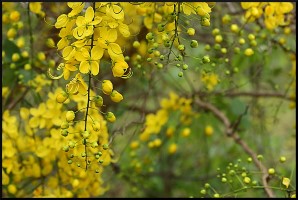 Vishu falls in the first of Medam. Many considered it as a New Year Day. Still others say, the New Malayalam Era was established when the Cheraman Perumal left the Kingdom. On the New moon day in the month of Karkitakam, people believed that the departed souls visited the dearer ones. People undergo fasting and offered food to crows-the symbol of departed souls, and offered obeisance. Many go the sea shore for offering the obeisance. Thiruvonam falls in Chingam that is in August-September. In January animal sacrifice were performed. Generally March –April were the months of Temple festivals.
Vishu falls in the first of Medam. Many considered it as a New Year Day. Still others say, the New Malayalam Era was established when the Cheraman Perumal left the Kingdom. On the New moon day in the month of Karkitakam, people believed that the departed souls visited the dearer ones. People undergo fasting and offered food to crows-the symbol of departed souls, and offered obeisance. Many go the sea shore for offering the obeisance. Thiruvonam falls in Chingam that is in August-September. In January animal sacrifice were performed. Generally March –April were the months of Temple festivals.
